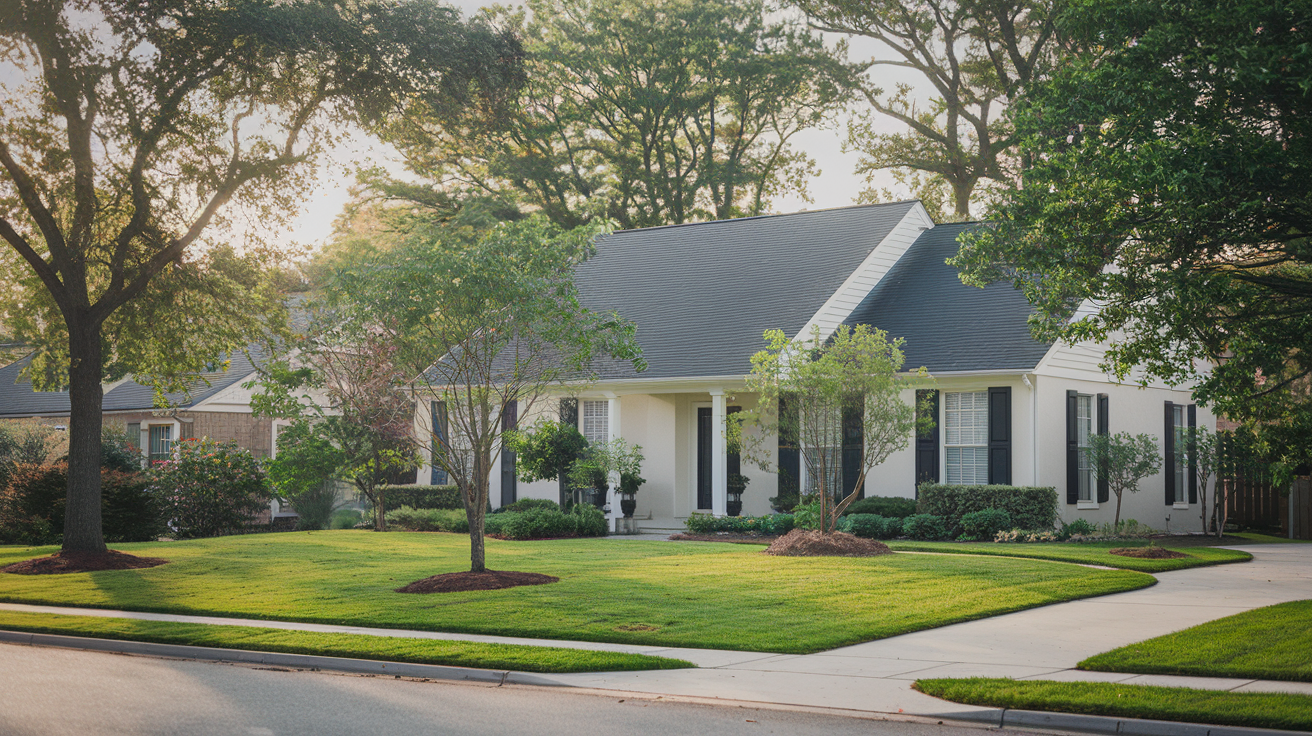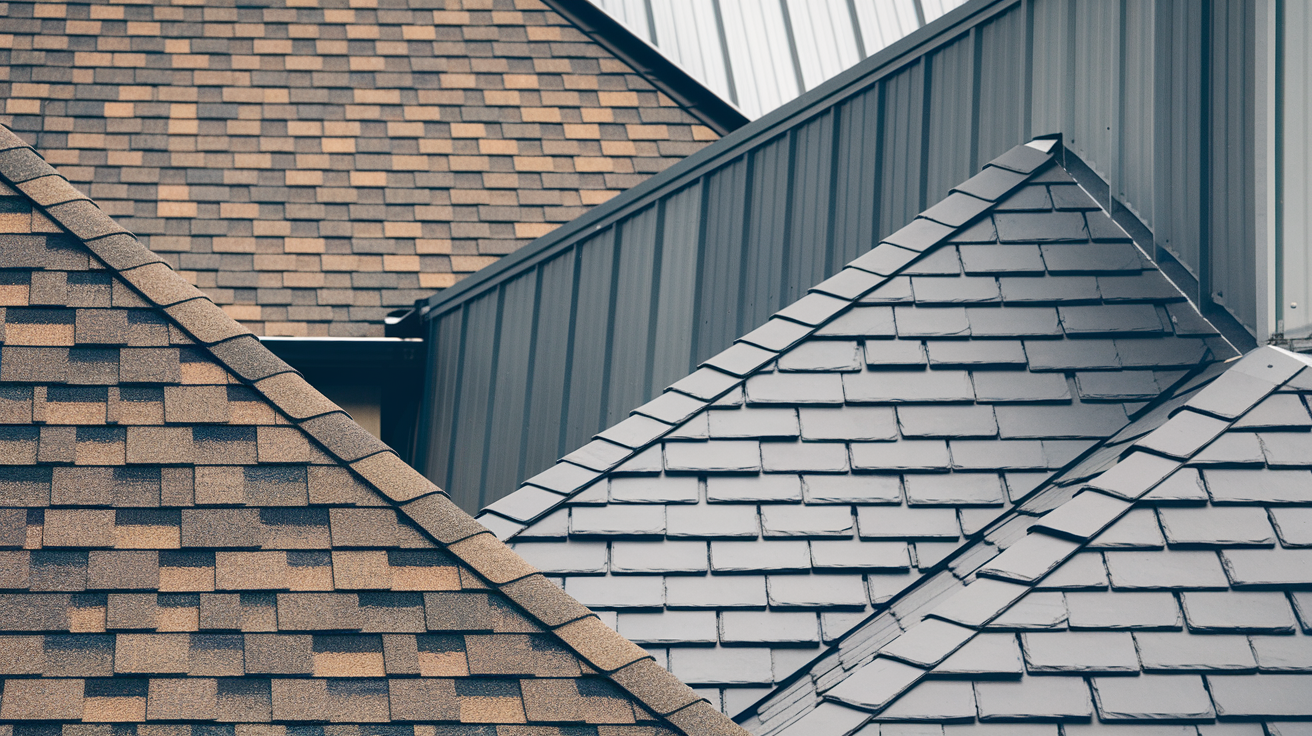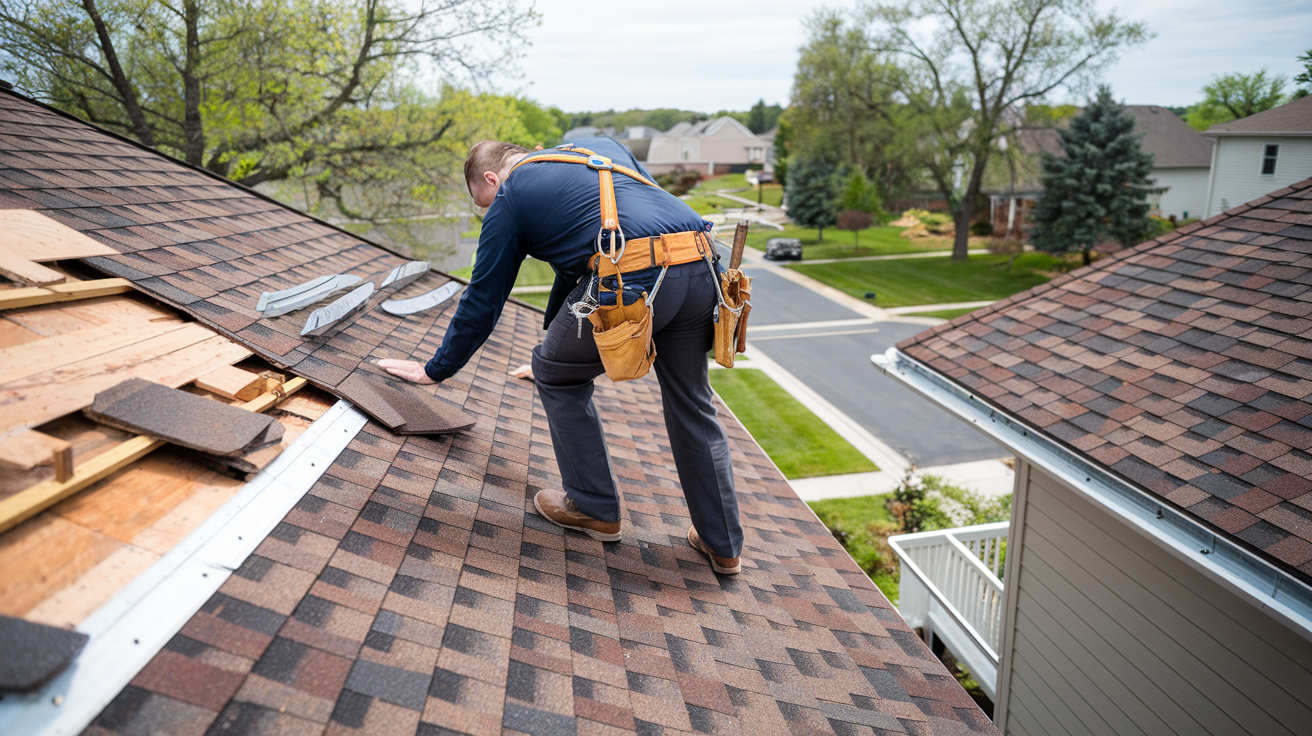Roof Replacement ROI: Boost Home Value Up to 70% With a New Roof
Is your aging roof keeping you up at night? You're not alone. Every year, millions of homeowners grapple with the decision to replace their roof, facing a significant investment that averages $9,191. While the upfront costs may seem daunting, understanding the true return on investment (ROI) of roof replacement can help you make a confident decision about this crucial home improvement project.
A new roof does more than just protect your home - it can significantly boost your property value. Homeowners typically recoup 60-85% of their roof replacement costs through increased home value, with the average project adding $15,500 to a home's resale price. Beyond the immediate financial returns, a new roof can also lead to substantial savings through reduced energy bills and insurance premiums, with some homeowners seeing insurance discounts of up to 35%.
In this comprehensive guide, we'll explore everything you need to know about roof replacement ROI, from material choices to regional variations in returns. You'll learn how to maximize your investment, understand the hidden financial benefits, and make an informed decision about whether now is the right time to replace your roof.
- Key Statistics and Data
- Regional Variations in ROI
- Impact on Home Value
- Roofing Materials and Their Implications
- Common Roof Problems and Solutions
- Financial Considerations for Homeowners
- Making an Informed Decision
Understanding the ROI of Roof Replacement
Roof replacement is a significant home improvement project, offering a substantial return on investment (ROI). Homeowners often wonder if a new roof is worth the cost. Replacing a roof can increase a home's value by an average of $15,500, translating to an ROI of about 70% (source: Homeowners, 2023). This means for every dollar spent, homeowners recoup 70 cents upon selling. Understanding ROI is key, whether selling soon or improving your home.

Key Statistics and Data
Roof replacements typically offer a 60% to 85% ROI, depending on factors like materials and energy efficiency (source: Homeowners, 2023). Energy-efficient roofing can boost ROI by lowering energy bills, making your home more attractive to buyers and potentially increasing its value.
Asphalt Shingles
Asphalt shingles are the most common roofing material, offering an ROI of around 61% (source: Homeowners, 2023). A $10,000 asphalt shingle roof could add $6,100 to your home's value.
Metal Roofs
Metal roofs cost more upfront but last much longer, typically between 40 to 80 years, compared to about 20 years for asphalt shingle roofs (source: Homeowners, 2023). They offer a similar ROI of roughly 60.9% (source: Homeowners, 2023). Other materials like slate offer varying lifespans and ROI, with slate lasting up to 150 years (source: Homeowners, 2023).
Cost Considerations
Roof replacement costs vary, ranging from $4 to $40 per square foot, depending on materials and labor (source: Homeowners, 2023). The average cost is around $9,191 (source: Homeowners, 2023). It is important to get several quotes from contractors and consider getting a Roof Assessment to understand your options.
Regional Variations in ROI
ROI on roof replacement varies by region, influenced by local housing markets and climate. In the East North Central region, the ROI is about 65% (source: Homeowners, 2023), which is one of the lowest in the U.S. Regions with high housing demand or severe weather may see better returns. Metal roofs might have a higher ROI in areas with hailstorms due to their impact resistance. Understanding regional differences helps homeowners make informed choices, and consulting a local real estate professional is always recommended.
Regional ROI Variations
East North Central: 65% ROI
High demand or severe weather regions: Better returns
Impact on Home Value
A new roof improves a home's appearance and boosts market value, increasing resale value by about 60.9% of its cost (source: Homeowners, 2023). Energy-efficient roofs can lower utility bills and may qualify for insurance discounts of 5% to 35% (source: Homeowners, 2023). Learn more about roof maintenance and its impact on value. Replacing an older roof can prevent insurance premium increases and improve marketability.
Roofing Materials and Their Implications
Choosing the right roofing material affects the longevity, cost, and value of your home. It's important to understand the pros and cons of each material to make an informed decision.
Types of Roofing Materials and Lifespan
Selecting the right roof involves balancing cost, appearance, and durability. Asphalt shingles are the most common, used in about 75% of roof installations (source: Homeowners). Metal roofs are more durable, lasting 40 to 80 years (source: Homeowners). Slate can last up to 150 years (source: Homeowners). Consider how long you plan to live in your home and your budget for upfront costs versus long-term maintenance. Learn more about roof maintenance to help make the best long-term decision for your home.
Cost Implications of Different Materials
Roofing material prices vary significantly, affecting the total cost of replacement. Asphalt shingles are the cheapest, costing around $4 to $5.50 per square foot (source: Homeowners). Metal roofs cost more, averaging up to $38,600 (source: Homeowners), but offer a great return on investment. Slate roofs are expensive upfront but last a long time. Balance the initial cost with the potential increase in home value and lower maintenance costs over time. A Roof Assessment can provide personalized insights into the best roofing material for your needs and budget.

Energy Efficiency and Climate Considerations
Energy efficiency is crucial when choosing roofing materials, especially in extreme weather areas. Metal roofs reflect sunlight, lowering cooling costs by up to 25% in the summer (source: Homeowners). Asphalt shingles can be improved with energy-saving options. Installing an energy code-compliant roof in certain areas can save 6-9% on energy costs annually (source: Homeowners). Consider energy efficiency and local weather when choosing a roofing material.
Common Roof Problems and Solutions
Addressing roof problems early can save significant expenses and prevent further damage. By understanding common roof issues and implementing effective solutions, homeowners can enhance the longevity and performance of their roofs. Consider getting a Roof Assessment to identify potential issues early.
Issues with Asphalt Shingles
Asphalt shingles are popular for their affordability and ease of installation but typically last only 15-30 years (source: Homeowners).
Common Asphalt Shingle Problems
- Granule Loss: Aging shingles lose granules, leading to leaks and water damage.
- Curling or Buckling: Poor attic ventilation or improper installation can cause curling or buckling.
Solutions for Asphalt Shingle Issues
- Regular Inspections: Check for missing granules and other visible damage at least once a year.
- Proper Ventilation: Ensure adequate attic ventilation to prevent premature shingle deterioration.
- Professional Installation: Proper installation by a qualified roofer prevents many common issues.
Challenges with Metal, Tile, and Slate Roofs
Metal, tile, and slate roofs are durable but face specific challenges.
Metal Roof Challenges
- Rust and Corrosion: Regular cleaning and maintenance prevent rust and corrosion.
Tile Roof Challenges
- Cracking: Avoid walking on tile roofs unless necessary to prevent cracking.
Slate Roof Challenges
- Repair Complexity: Slate repairs require specialized skills. Contact a qualified professional for repairs.
Regular Inspections
Check for missing granules and damage annually.
Proper Ventilation
Ensure adequate attic ventilation.
Professional Installation
Hire a qualified roofer for installation.
Maintenance and Prevention Tips
Regular maintenance is crucial for extending roof life. Learn more about roof maintenance.
Key Maintenance Tasks
- Gutter Cleaning: Clean gutters at least twice a year to prevent water buildup.
- Tree Trimming: Trim overhanging branches to prevent damage.
- Attic Ventilation: Ensure proper ventilation to prevent problems like ice dams.
- Professional Inspections: Invest in professional inspections every few years.
Financial Considerations for Homeowners
Understanding the financial aspects of roof replacement empowers homeowners to make informed decisions.
Initial Costs and Budgeting
Planning your budget is the first step in a roof replacement project.
Cost Factors
Several factors influence the cost of a new roof, including size, materials, and labor.
Material and Labor Costs
Roof replacement costs range from $4 to $40 per square foot (source: Homeowners).
Roof Size
The size of your roof significantly impacts the total cost. Get a personalized Roof Assessment to determine specific needs and costs.
Your homeowner's insurance premiums can be affected by the age and condition of your roof.
Older roofs often mean higher insurance premiums, with potential increases of 10-30% (source: Homeowners).
New Roofs and Potential Discounts
A new roof can lead to insurance discounts, ranging from 5% to 35% (source: Homeowners). Learn more about roof maintenance and its impact on insurance.
<div role="complementary" aria-label="Insurance Savings" style="display: flex; flex-direction: column; align-items: center; padding: 16px; background-color: #e0f7fa; border-radius: 8px; max-width: 100%;">
<h3 style="margin: 0; font-size: 1.2em;">Insurance Savings</h3>
<p style="margin: 8px 0;">Older roofs: 10-30% premium increase</p>
<p style="margin: 8px 0;">New roofs: 5-35% potential discount</p>
</div>Potential Savings and Discounts
A new roof offers potential savings beyond insurance.
Energy Efficiency
Energy-efficient roofing materials can lower energy bills by 6-9% annually (source: Homeowners).
Impact-Resistant Roofs
Impact-resistant roofs can qualify for insurance discounts and protect your home from weather damage.
Making an Informed Decision
Deciding to replace your roof is a significant investment. Understanding what impacts ROI helps you make an informed decision. Learn more about roof maintenance to help you make your decision.
Factors Influencing Roof Replacement ROI
Several factors influence the ROI of a roof replacement.
Roofing Material
Asphalt shingles typically yield about 61% ROI (source: Homeowners, 2023), while metal roofs offer slightly higher returns.
Location
Geographic location affects ROI, with some regions seeing lower returns (source: Homeowners, 2019).
Energy Efficiency and Insurance Savings
Energy efficiency improvements and insurance savings add to the financial benefits.
Assessing the Need for Replacement
Before replacing your roof, assess if it's necessary.
Roof Age and Condition
Check your roof's age and condition. Most roofs last 25 to 50 years (source: Homeowners).
Signs of Damage
Look for damage like leaks or missing shingles. A professional roofing inspector can help decide if replacement is best. Get Your Roof Assessment for a comprehensive evaluation.
Strategies to Maximize Value and Protection
Maximize value and protection with a few strategies.
Durable Materials
Choose durable materials to withstand local weather and enhance value.
Energy Efficiency
Invest in an energy-efficient roof compliant with local energy codes.
Insurance Discounts
Leverage insurance discounts for impact-resistant or new roofs. Contact your insurance provider for more information.

Disclaimer: This blog post is intended for informational purposes only and should not be considered professional roofing advice. Always consult with qualified roofing contractors and insurance professionals for specific guidance regarding your individual circumstances.
